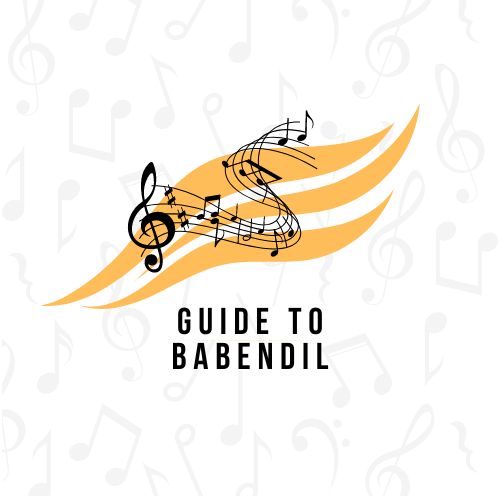Babandil or Babendil is a narrow-rimmed gong that is primarily used in the Maguindanao kulintang ensemble as a timekeeper. It has several names that vary depending on the region, such as babendir in Maguindanao, and Babndir for the Maranao people. For other Southern Philippine groups, the babendil is called bandil, babendil, babendil, and bapindil. However, the origin of this instrument could be traced from the Indian subcontinent or the Middle-East.
According to scholars, the name Babendil came from the Arabic word ‘bandair,’ which means ‘circular-type tambourine or frame drum. Meanwhile, others suggest that the babendil is related to the Javanese bende or bebende, a gong with similar characteristics to an Indonesian gamelan ensemble. In addition to that, it is also believed that the Babendil has a relation with the Indian kettle drum called behri. In fact, ancient Sanskrit had indicated that the bende was the bronze equivalent of the Indian instrument called behri.
Moreover, the Babendil is a percussion instrument considered as the larger than the largest kulintang gong and has a comparable diameter to agung and gandingan. The gandingan is a Philippine set of four gongs used by the Maguindanao people. It is a gong with a shallow boss, thin rims, and was hung vertically in a strong frame stand. When played in an ensemble, the gandingan functions as a secondary melodic instrument; however, it is used to communicate, send messages, and warnings with fellow Maguindanao when it was played in solo. Meanwhile, an agung is a set of two wide-rimmed gongs that produces a bass sound used by the Maguindanao, Maranao, Tausug, and Sama-Badjau people.
Nevertheless, the Babendil has a sunken boss, unlike the gandingan and agung. Because the babendil’s boss is relatively non-functional, this instrument was struck in its flange or rim instead. With this, the Babendil is usually called ‘false gong’ and classified as a bell in the Sachs-Hornbostel system of musical instrument classification. The Sachs-Hornbostel, also the Hornbostel Sachs, is an instrument classification devised by Erich Moritz von Hornbostel and Curt Sachs. It was first published in 1914 in the Zeitschrift Ethnologie.
In playing the Babendil, the player useda bamboo stick or a strip of rattan, producing a distinctive sharp metallic clang. Typically, babendils were made out of bronze. However, due to the scarcity of bronze in Mindanao, most of the gong instruments, including the babendils, were made of more common metals such as iron, tin cans, or brass.
This instrument could be played whether the performer is standing or sitting with the instrument hung a foot from the floor. Proper techniques in playing the babendil require holding this instrument vertically and away from the performer’s body. The player should also hold the babendil at the rim between the player’s thumb and four fingers. With the player’s thumb parallel to the instrument’s rim, he could now strike the babendil using a bamboo stick or a strip of rattan. Fundamental patterns in playing the babendil are similar to the drum patterns of the dabakan, a single-headed Philippine drum. Also, the babendil’s beat is comparable to the pattern of a low-pitched agung.
Traditionally, the Babendil could be played by either gender. The kagul or tagutok (also bantula or tagungtung) is substituted for the babendil’s part in the wooden kulintang ensemble. A kagul is a bamboo scrapper gong or slit drum used by the Maguindanao people and Visayans. It has a jagged edge on one side and played with two beaters, one making a beat while the other scraped the jagged edge of the instrument. The kagul’s rhythm is usually simplistic in nature, which is consist of one rhythmic pattern.
Among the ethnic groups of Tausug, Yakan, and the Samal, their babendil-like instruments have gone into disuse. However, its tempo is still kept in check using the highest gong on the kulintang ensemble. The beat for the ostinato was called solembat by the Samal, while the Yakan calls the same beat as nulanting. Among the Tagbanwa, the instrument babendil is used not only to keep the rhythm of pieces but also as an accompaniment to songs.

